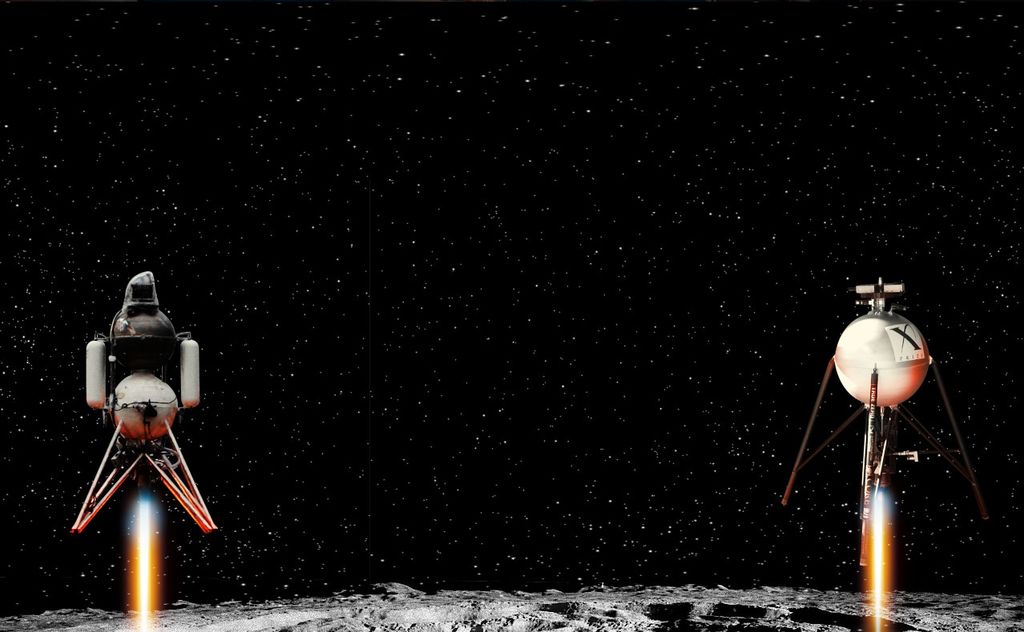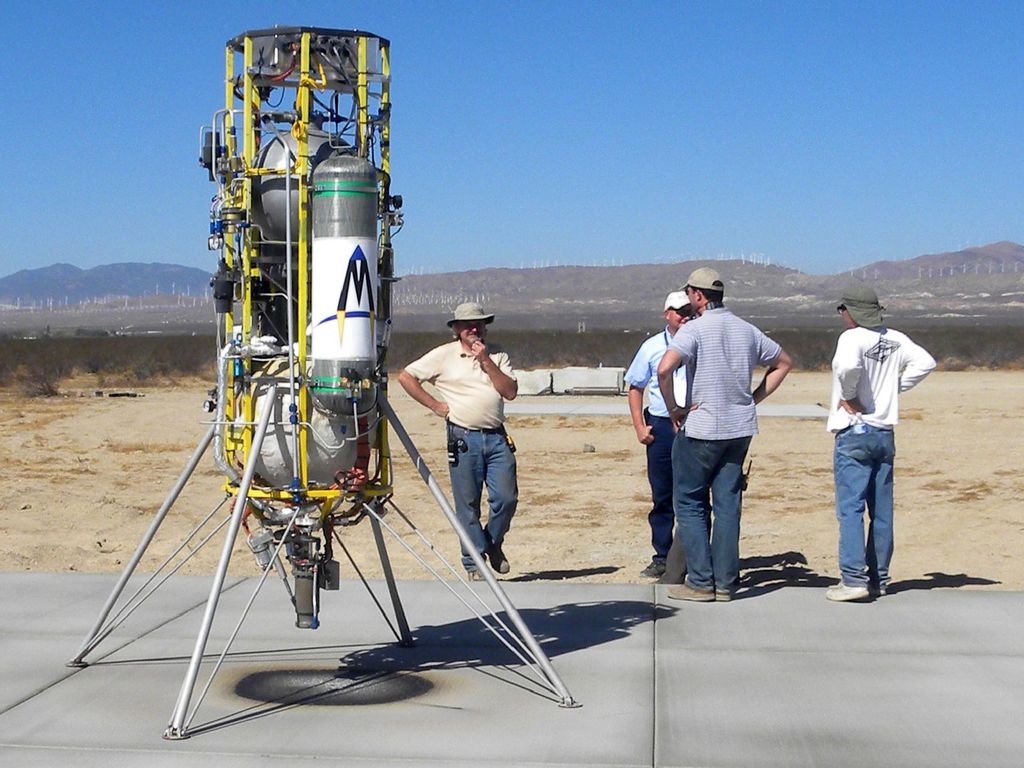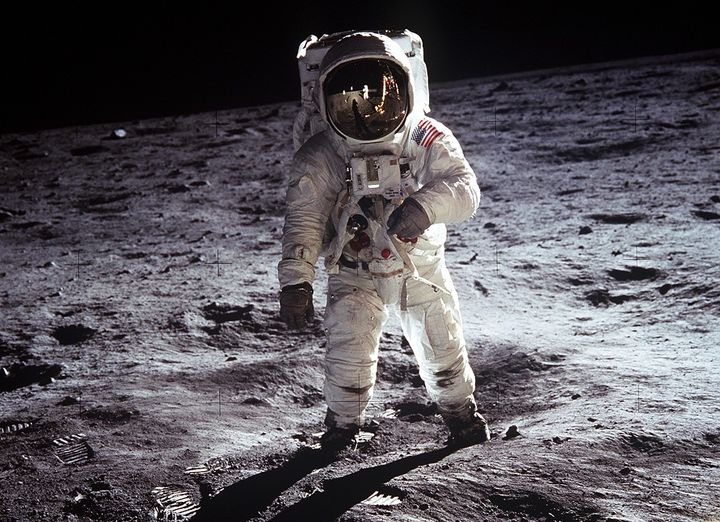
Ever since astronauts first set foot on the Moon in 1969, NASA and every space agency on the planet has been beset by the challenge of how to maintain a human presence there. While subsequent crewed missions were mounted, the Apollo program represented a major financial commitment which could not be maintained indefinitely, and was inevitably cancelled in 1972.
While colonies on the Moon still seem like the stuff of futurist speculation, being able to regularly send probes, landers, rovers and other research vessels - as well as crewed modules - to the Lunar surface is necessary for ongoing space exploration and scientific research. And doing so in a way that is cost-effective is a must in this era of dwindling research budgets and cutbacks.
For this reason, NASA and X Prize have been collaborating with commercial developers and inventors to produce spacecraft that can do the job at a competitive price. Towards this end, they partnered with Northrop Grumman to create the Lunar Lander Challenge – a competition funded by NASA’s Centennial Challenges program and conducted by the X Prize Foundation with sponsorship provided by Northrop Grumman.

Running from 2006 to 2009, the competition offered a series of prizes totaling $2 million, with a grand prize of up to $1.5 million to whichever team could build and launch a vertical takeoff/vertical landing (VTVL) rocket that could achieve the necessary thrust to land on the Moon and move between the surface and its orbit.
The multi-level competition was divided into two levels designed to test the crew’s vehicle in increasingly realistic landing situations. In both, teams were required to demonstrate control of their vehicle by flying it to an altitude of more than 50 meters (160 feet), move it laterally to a landing pad 100 meters (330 feet) away, land safely, and then return, following the same path.
For the first level, the pad was as simple, flat circle measuring 10 m (33 feet) in diameter. For the second level, the landing area was a simulated lunar surface, complete with craters, boulders and uneven terrain. Each team had to meet a required minimum flight time of 90 seconds for Level 1 and 180 seconds for Level 2. Teams were permitted to refuel their vehicle between levels, and were required to complete both within a 150-minute time frame (including preparation).
Each Level offered a first- and second-place prize. Level 1 awarded a first place purse of $350,000 and a $150,000 purse for second place while Level 2 awarded a first place prize of $1 million and a $500,000 prize for second place. The competition kicked off in October of 2006, and attracted a total of eight teams from various US startup aerospace companies before finishing in November 5th of 2009.
![]()
During the first three years of the competition, none of the teams who entered managed to complete the challenge - which was held at the Las Cruces International Airport in New Mexico. However, by 2009, the challenge was modified so that teams could fly their lander from multiple locations instead of having to all come to Las Cruces to compete.
For the duration of the Lunar Lander Challenge "season" - which ran from July to October 2009 - judges travelled to and from locations near the home bases of the aerospace companies and assessed the potential of their landers. And in the end, two companies divided the Level 1 and 2 challenges between them after both successfully completing their VTVL flights and qualifying for the prizes.
For the Level 1 competition, first place went to Armadillo Aerospace for their Pixel lander (pictured above), while second place when to Masten Space Systems for their Xoie lander (pictured below). For the Level 2 competition, the order was reversed - with Masten winning first place and Armadillo garnering second.
All told, Masten went home with a prize of $1.15 million to fund the development of their Xoie lander while Armadillo collected the remaining $850,000 to put towards their Pixel concept. The winners were announced on November 5, 2009 at an awards ceremony held in Washington DC and hosted by the XPRIZE and NASA.

In the end, the decision went to Masten over a few feet worth of landing accuracy. Whereas Pixel achieved an accuracy of 87 cm (34 inches) from the designated landing spot, Masten had an average of 19 cm (7.5 inches). A small margin, but one which is highly important when dealing with things like Lunar Landings, where a difference of a few feet could mean landing safely on a smooth flat spot of regolith or falling sideways into a pile of rocks.
Much like all Centennial Challenges and X Prize competitions, the aim of the NG Lunar Lander Challenge was to foster a sense of collaboration between government, space agencies and entrepeneurs. But as it says on their website, their aim is also the "jumstatring a new era of sustainable lunar exploration."
By bringing together inventors, industry professionals, and government agencies that can provide the necessary innovation, resources and funding, a day where we go back to the Moon, and at a fraction of the cost of what it took to place the first men up there, could be just around the corner..
And be sure to check out this video of the highlights of the 2009 NG LLC ceremony:
Sources:
- lunarlander.xprize.org/
- www.nasa.gov/home/hqnews/2009/nov/HQ_09-258-Lunar_Lander.html#.VMqDyy5FW-c
- www.popsci.com/military-aviation-amp-space/article/2009-09/first-possible-winner-1-million-lunar-lander-challenge
- armadilloaerospace.com/n.x/Armadillo/Home/News?news_id=337
- www.nasa.gov/directorates/spacetech/centennial_challenges/cc_ll_feature_lvl2.html#.VMqQyy5FW-d
- www.nasa.gov/topics/moonmars/features/centennial_masten.html#.VMqQ7i5FW-c
- www.universetoday.com/44083/masten-wins-1-million-x-prize-on-last-possible-day/
- masten.aero/
Image Credits:
- Apollo Landing: NASA
- Lunar Lander XPrize: lunarlander.xprize.org
- Pixel Lander: armadilloaerospace.com
- Xole Lander: nasa.gov








